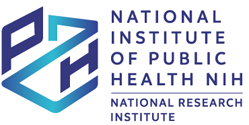RESEARCH PAPER
Epidemiological aspects of the association of the hypertriglyceridemic waist phenotype with metabolic syndrome and cardiovascular risk factors in Morocco. Case the Amazigh population from a geographic region called Souss
1
Cellular Biology and Molecular Genetics Laboratory, Sciences Faculty, Ibn Zohr University, Morocco
2
Medical Biology Unit, Provincial Hospital Hassan 1er, Tiznit, Morocco
3
Sciences of Health and Environment Laboratory, Team of Biotechnology, Environment and Health,
Higher Institute of Nursing Professions and Health Techniques (ISPITS), Morocco
Submission date: 2024-05-18
Final revision date: 2024-07-05
Acceptance date: 2024-07-06
Online publication date: 2024-07-25
Publication date: 2024-08-14
Corresponding author
Hamid Najeh
1 Cellular Biology and Molecular Genetics Laboratory, Sciences Faculty, Ibn Zohr University,, 80000, Agadir, Morocco
1 Cellular Biology and Molecular Genetics Laboratory, Sciences Faculty, Ibn Zohr University,, 80000, Agadir, Morocco
Rocz Panstw Zakl Hig 2024;75(2):185-193
KEYWORDS
hypertriglyceridemic waist phenotypecardiovascular risk factorsmetabolic syndromeepidemiologyMorocco
TOPICS
ABSTRACT
Background: The global prevalence of metabolic syndrome (MetS) increases susceptibility to non-communicable
diseases such as obesity, type 2 diabetes, and cardiovascular disease, posing significant health risks. Effective prevention
and management require objective tools. The hypertriglyceridemic waist (TG+WC+) phenotype is proposed as a less
expensive approach to identify individuals with metabolic syndrome and other cardiovascular risk factors. Objective: The current aim of this investigation is to study the epidemiological characteristics of the hypertriglyceridemic
waist phenotype and their correlations with cardiovascular risk factors and MetS in the Moroccan Amazigh ethnic group
from the Souss region of Morocco. Material and Methods: A total of 827 Amazigh adults from the Sousse region of Morocco were divided into four distinct phenotype groups: TG-WC-, TG+WC-, TG-WC+, and TG+WC+ (normal TG- or high TG+ triglycerides/normal WC- or
high WC+ waist circumference). The association of the different phenotypes with MetS and other cardiovascular risk
factors was established by logistic regression analysis. Results: The prevalence of the TG+WC+ phenotype was 27.7% and varied according to age group and sex. Among
subjects with the TG+WC+ phenotype, most were 41-60 years old (53.3%) and in women (74.2%). Participants with the
TG+WC+ phenotype had the highest prevalence of dyslipidemia (87.3%), hypoHDLaemia (69.9%), and general obesity
(37.12%). The three phenotypes TG-WC-, TG+WC- and TG-WC+ were less associated with MetS and other cardiovascular
risk factors. Moreover, people with the TG+WC+ phenotype had a very high odds ratio for MetS. Conclusion: These findings suggest that the TG+WC+ phenotype exhibits a robust correlation with MetS and additional
variables connected to cardiovascular risk. The TG+WC+ phenotype serves as a valuable clinical instrument for detecting
individuals vulnerable to MetS and cardiovascular diseases.
Share
RELATED ARTICLE
We process personal data collected when visiting the website. The function of obtaining information about users and their behavior is carried out by voluntarily entered information in forms and saving cookies in end devices. Data, including cookies, are used to provide services, improve the user experience and to analyze the traffic in accordance with the Privacy policy. Data are also collected and processed by Google Analytics tool (more).
You can change cookies settings in your browser. Restricted use of cookies in the browser configuration may affect some functionalities of the website.
You can change cookies settings in your browser. Restricted use of cookies in the browser configuration may affect some functionalities of the website.



